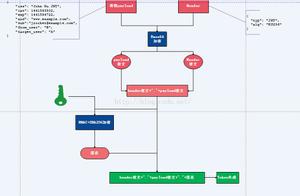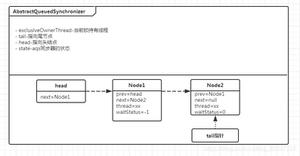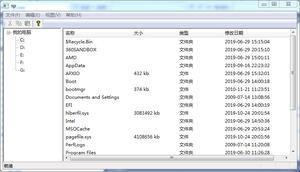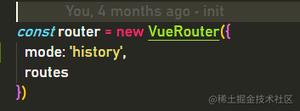react-router的原理

1、hash的方式
以 hash 形式(也可以使用 History API 来处理)为例,当 url 的 hash 发生变化时,触发 hashchange 注册的回调,回调中去进行不同的操作,进行不同的内容的展示
function Router() { this.routes = {};
this.currentUrl = '';
}
Router.prototype.route = function(path, callback) {
this.routes[path] = callback || function(){};
};
Router.prototype.refresh = function() {
this.currentUrl = location.hash.slice(1) || '/';
this.routes[this.currentUrl]();
};
Router.prototype.init = function() {
window.addEventListener('load', this.refresh.bind(this), false);
window.addEventListener('hashchange', this.refresh.bind(this), false);
}
window.Router = new Router();
window.Router.init();
link的实现
可以从 react-router/ Link 中看到,对该组件的点击事件进行了阻止了浏览器的默认跳转行为,而改用 history 模块的 pushState 方法去触发 url 更新。
为什么React组件会更新
给history注册了lisetner事件,也就是里面的setState函数;
history.push(pathname,state)函数执行,这里会执行注册的listener函数
listerer中的React的setState会执行;
React组件更新;
其实无论是react-router. react-redux. 能够使组件更新的根本原因,还是最后出发了setState函数;
对于react-router,其实是对history原生对象的封装,重新封装了push函数,使得我们在push函数执行的时候,可以触发在Router组件中组件装载之前,执行了history.listener函数,该函数的主要作用就是给listeners数组添加监听函数,每次执行history.push的时候,都会执行listenrs数组中添加的listener,这里的listener就是传入的箭头函数,功能是执行了Router组件的setState函数,从《Router Switch Route源码解析》文章中,可以看出来,Router执行了setState之后,会将当前url地址栏对应的url传递下去,当Route组件匹配到该地址栏的时候,就会渲染该组件,如果匹配不到,Route组件就返回null;
componentWillMount() { const { children, history } = this.props
invariant(
children == null || React.Children.count(children) === 1,
'A <Router> may have only one child element'
)
// Do this here so we can setState when a <Redirect> changes the
// location in componentWillMount. This happens e.g. when doing
// server rendering using a <StaticRouter>.
//这里执行history.listen()方法;传入一个函数;箭头函数的this指的是父级的作用域中的this值;
this.unlisten = history.listen(() => {
this.setState({
match: this.computeMatch(history.location.pathname)
})
})
}
1、react-router依赖基础 - history
history是一个独立的第三方js库,可以用来兼容在不同浏览器、不同环境下对历史记录的管理,拥有统一的API。具体来说里面的history分为三类:
老浏览器的history: 主要通过hash来实现,对应createHashHistory
高版本浏览器: 通过html5里面的history,对应createBrowserHistory
node环境下: 主要存储在memeory里面,对应createMemoryHistory
createBrowserHistory: 利用HTML5里面的history
createHashHistory: 通过hash来存储在不同状态下的history信息
createMemoryHistory: 在内存中进行历史记录的存储
执行URL前进
- createBrowserHistory: pushState、replaceState
- createHashHistory: location.hash=*** location.replace()
- createMemoryHistory: 在内存中进行历史记录的存储
检测URL回退
- createBrowserHistory: popstate
- createHashHistory: hashchange
- createMemoryHistory: 因为是在内存中操作
2、react-router的基本原理
框架去拦截浏览器跳转,自己去同步UI组件
其中在react-router中,URL对应Location对象,而UI是由react components来决定的,这样就转变成location与components之间的同步问题
通过router声明了一份含有 path to component 的各个映射的路由表。
react-router 还提供的 Link 组件(如下),作为提供更新 url 的途径,触发 Link 后最终将通过如上面定义的路由表进行匹配,并拿到对应的 component 及 state 进行 render 渲染页面。
3、从点击 Link 到 render 对应 component ,路由中发生了什么
Router 在 react component 生命周期之组件被挂载前 componentWillMount 中使用 this.history.listen 去注册了 url 更新的回调函数。回调函数将在 url 更新时触发,回调中的 setState 起到 render 了新的 component 的作用。
Router.prototype.componentWillMount = function componentWillMount() { // .. 省略其他
var createHistory = this.props.history;
this.history = _useRoutes2['default'](createHistory)({
routes: _RouteUtils.createRoutes(routes || children),
parseQueryString: parseQueryString,
stringifyQuery: stringifyQuery
});
this._unlisten = this.history.listen(function (error, state) {
_this.setState(state, _this.props.onUpdate);
});
};
上面的 _useRoutes2 对 history 操作便是对其做一层包装,所以调用的 this.history 实际为包装以后的对象,该对象含有 _useRoutes2 中的 listen 方法,如下
function listen(listener) { return history.listen(function (location) {
// .. 省略其他
match(location, function (error, redirectLocation, nextState) {
listener(null, nextState);
});
});
}
可看到,上面代码中,主要分为两部分
- 使用了 history 模块的 listen 注册了一个含有 setState 的回调函数(这样就能使用 history 模块中的机制)
- 回调中的 match 方法为 react-router 所特有,match 函数根据当前 location 以及前面写的 Route 路由表匹配出对应的路由子集得到新的路由状态值 state,具体实现可见 react-router/matchRoutes ,再根据 state 得到对应的 component ,最终执行了 match 中的回调 listener(null, nextState) ,即执行了 Router 中的监听回调(setState),从而更新了展示。
如何触发监听的回调函数的执行?
url 更新主要有两种方式:简单的 hash 更新或使用 history api 进行地址更新。在 react-router 中,其提供了 Link 组件,该组件能在 render 中使用,最终会表现为 a 标签,并将 Link 中的各个参数组合放它的 href 属性中。可以从 react-router/ Link 中看到,对该组件的点击事件进行了阻止了浏览器的默认跳转行为,而改用 history 模块的 pushState 方法去触发 url 更新
可以将以上 react-router 的整个包装闭环总结为
- 回调函数:含有能够更新 react UI 的 react setState 方法。
- 注册回调:在 Router componentWillMount 中使用 history.listen 注册的回调函数,最终放在 history 模块的 回调函数数组 changeListeners 中。
- 触发回调:Link 点击触发 history 中回调函数数组 changeListeners 的执行,从而触发原来 listen 中的 setState 方法,更新了页面
至于前进与后退的实现,是通过监听 popstate 以及 hashchange 的事件,当前进或后退 url 更新时,触发这两个事件的回调函数,回调的执行方式 Link 大致相同,最终同样更新了 UI ,这里就不再说明。
react-router 主要是利用底层 history 模块的机制,通过结合 react 的架构机制做一层包装.
router3的按需加载方式
const about = (location, cb) => { require.ensure([], require => {
cb(null, require('../Component/about').default)
},'about')
}
//配置route
<Route path="helpCenter" getComponent={about} />
以上是 react-router的原理 的全部内容, 来源链接: utcz.com/z/382718.html







